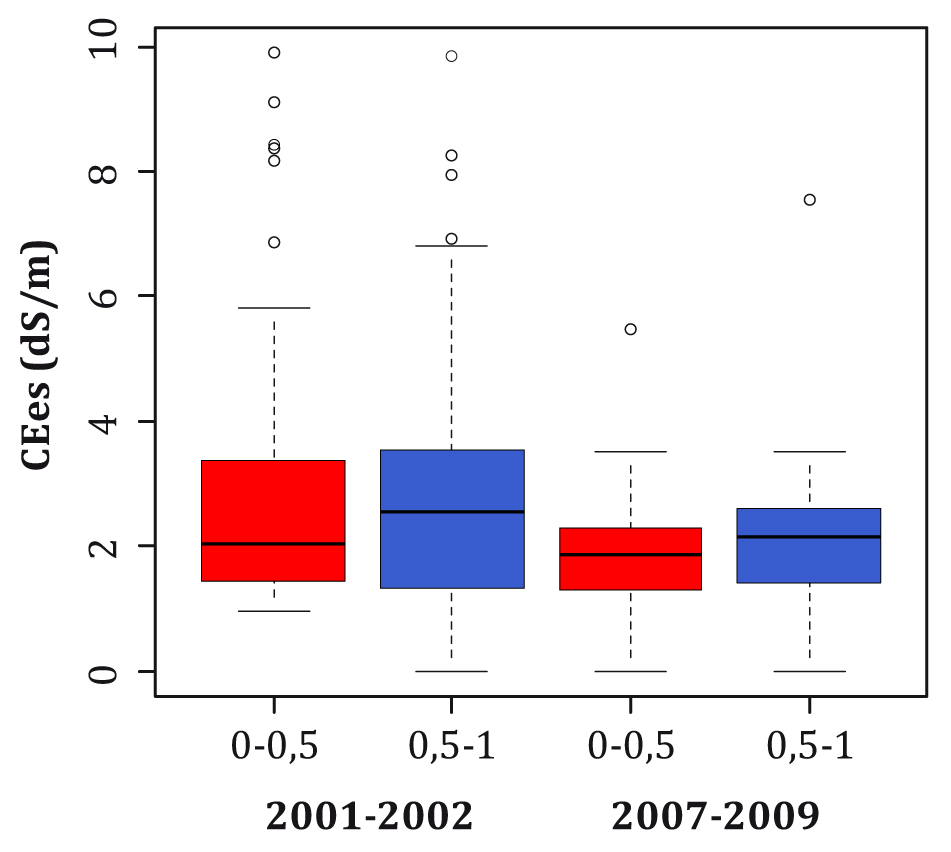Salinity evolution in irrigated soils in the Lower Tunuyán River basin (Mendoza - Argentina)
Keywords:
soil iso-salinity maps, soil-salinity dynamicsAbstract
Soil salinity and irrigation water affect crop production and the economy of irrigated oases. This study was carried out on cultivated soils in the command area of the Lower Tunuyán River in order to determine the evolution of soil salinity by measuring the electrical conductivity of the soil saturation extract (CEes for its acronym in Spanish). The study comprised periods 2001-2002 and 2007-2009 and determinations were made at two different depths (0-0.5 m and 0.5-1 m). Iso-salinity curves were plotted and the factors affecting CEes were analized: water table levels, irrigation canal lining, rainfall, evapotranspiration and volumes derived for irrigation. Results showed that there is a significant difference in the temporal variation of the CEes at both depths, with a decreasing trend through time. Iso-salinity curves made it possible to determine that in 49% of the superficial strata (2002) soils were moderately saline, while in 2009, 60% of the area showed that canal lining led to a reduction in salinity levels due to decreasing water tables.

Downloads
Published
Issue
Section
License
Aquellos autores/as que tengan publicaciones con esta revista, aceptan las Políticas Editoriales.


